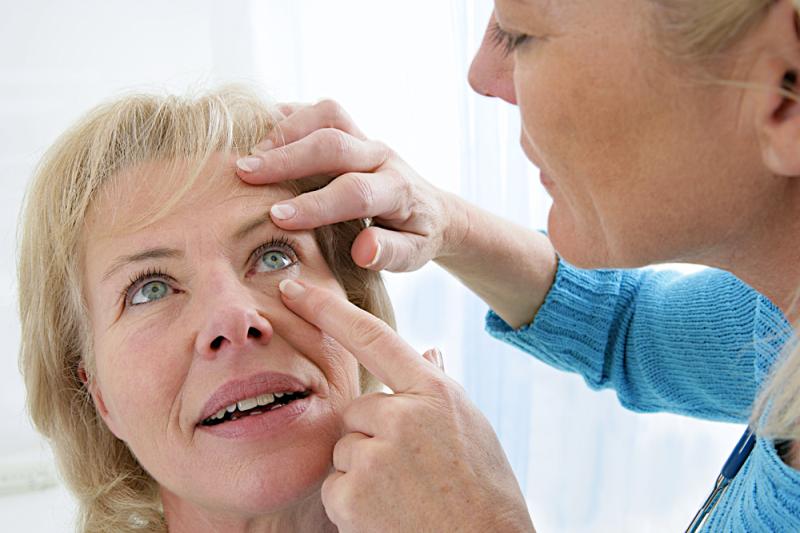
For patients with neovascular age-related macular degeneration (nAMD), a less frequent dosing regimen of abicipar appears to improve and stabilize visual acuity over 52 weeks of treatment, and this effect is noninferior to that of monthly ranibizumab injections, as shown in the results of two phase III trials.
“Antivascular endothelial growth factor (VEGF) therapy is the standard of care in nAMD, but the recommended dosing for current available agents is at 4- or 8-week intervals, and there is an unmet need for a therapy that can be administered less frequently to reduce the burden of treatment,” according to the investigators.
“The noninferiority of [a quarterly] regimen of abicipar to monthly ranibizumab demonstrated in the [current] analysis suggests that abicipar may have a longer duration of effect than other anti-VEGF therapies. [This advantage] may translate into less frequent dosing in all clinical practice treatment paradigms (established dosing interval, as needed, and treat and extend) and result in reduced burden associated with the injection procedure, fewer office visits, and reduced costs for patients, caregivers and healthcare systems,” they added.
In the current analysis, the investigators pooled data from CEDAR and SEQUOIA, phase III trials with identical protocols. The total population consisted of 1,888 patients (mean age, 76.3 years; 55.7 percent female) with active choroidal neovascularization secondary to AMD and best-corrected visual acuity (BCVA) of 24–73 Early Treatment Diabetic Retinopathy Study (ETDRS) letters.
Of the patients, 630 received study eye treatment with abicipar 2 mg every 8 weeks (after 3 initial doses at baseline and weeks 4 and 8; aQ8), 628 received the same dosing but every 12 weeks (after 3 initial doses at baseline and weeks 4 and 12; aQ12), and 630 were given ranibizumab 0.5 mg every 4 weeks (rQ4).
At week 52, the majority of patients across treatment arms achieved the primary efficacy endpoint of stable vision (defined as <15-letter loss in BCVA from baseline): 93.2 percent in aQ8, 91.3 percent in aQ12, and 95.8 percent in rQ4. Both abicipar regimens were noninferior to monthly ranibizumab. [Ophthalmology 2020;doi:10.1016/j.ophtha.2020.03.035]
Results for the secondary endpoints of BCVA and central retinal thickness (CRT) at week 52 followed a similar pattern. The mean changes from baseline in BCVA were 7.5, 6.4 and 8.4 letters, while those in CRT were −144, −145 and −144 μm in the aQ8, aQ12 and rQ4 arms, respectively.
“The effects on visual outcomes at week 52 were obtained after 6 or 8 injections of abicipar compared with 13 injections of ranibizumab,” the investigators noted. “The primary safety concern associated with abicipar treatment is the increased risk of the occurrence of intraocular inflammation (IOI).”
The event was documented in 15.4 percent patients in the aQ8 arm, 15.3 percent in the aQ12 arm and 0.3 percent in the rQ4 arm. Nevertheless, IOI was typically mild or moderate in severity and were treated with topical corticosteroids.
“Risk mitigation plans will be implemented during abicipar use to discontinue treatment at the first sign of IOI, while continuing to manage active choroidal neovascularization and IOI concurrently to optimize the visual outcome. Intraocular corticosteroid therapy is recommended if retina vasculitis occurs, in order to minimize the risk to patients while achieving the therapeutic benefit,” the investigators said.
“[T]he abicipar product used in [CEDAR and SEQUOIA] has gone through a purification process to reduce host cell proteins in an effort to reduce the incidence of IOI, and this has been investigated in the MAPLE study, whose results are forthcoming,” they added. [https://clinicaltrials.gov/ct2/show/NCT03539549]